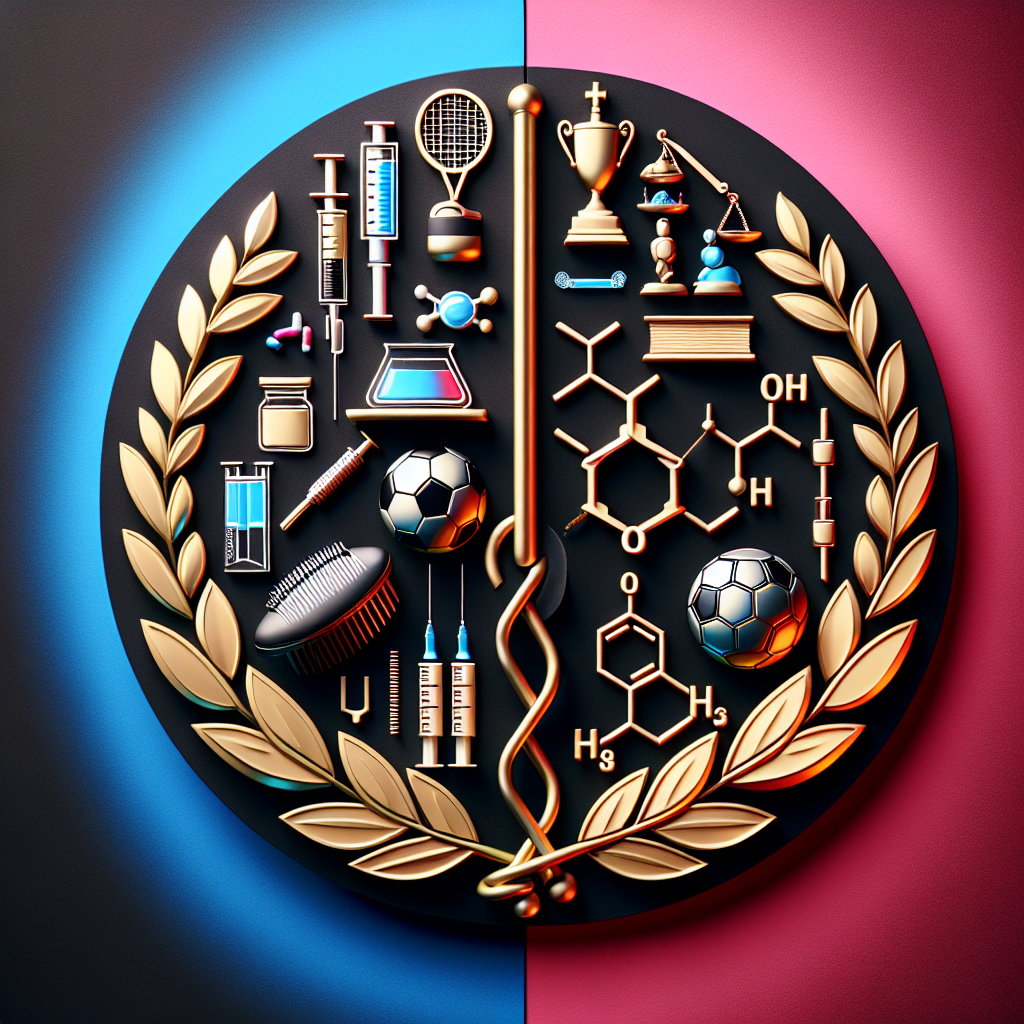-
Table of Contents
Trenbolone: The Most Discussed Performance-Enhancing Drug in Sports
Performance-enhancing drugs (PEDs) have been a controversial topic in the world of sports for decades. Athletes are constantly seeking ways to gain a competitive edge, and PEDs have been a popular choice. Among the various PEDs, one substance stands out as the most discussed and debated – Trenbolone. This anabolic steroid has gained notoriety for its powerful effects on muscle growth and performance. In this article, we will delve into the pharmacology of Trenbolone and its impact on sports performance.
What is Trenbolone?
Trenbolone is a synthetic androgenic-anabolic steroid (AAS) that was first developed in the 1960s for veterinary use. It was primarily used to promote muscle growth and increase appetite in livestock. However, it soon caught the attention of bodybuilders and athletes due to its potent anabolic effects.
Trenbolone is derived from the parent hormone nandrolone, with some modifications to its chemical structure. These modifications make it more potent and resistant to metabolism, resulting in a longer half-life and increased bioavailability. Trenbolone is available in three forms – Trenbolone acetate, Trenbolone enanthate, and Trenbolone hexahydrobenzylcarbonate (Parabolan). All three forms have similar effects, but differ in their duration of action.
Mechanism of Action
Trenbolone exerts its effects by binding to androgen receptors in the body. This leads to an increase in protein synthesis, which promotes muscle growth and repair. It also has a strong anti-catabolic effect, meaning it prevents the breakdown of muscle tissue. Additionally, Trenbolone increases the production of red blood cells, which improves oxygen delivery to muscles and enhances endurance.
One of the unique characteristics of Trenbolone is its ability to bind to glucocorticoid receptors. Glucocorticoids are stress hormones that can have a catabolic effect on muscle tissue. By binding to these receptors, Trenbolone prevents the action of glucocorticoids, further enhancing its anabolic effects.
Effects on Sports Performance
The use of Trenbolone in sports is primarily to enhance muscle growth and strength. It is popular among bodybuilders, powerlifters, and other strength athletes. Studies have shown that Trenbolone can increase muscle mass by up to 10-15% in just 4-6 weeks of use (Kicman & Gower, 2003). This is a significant increase compared to natural muscle growth, which is estimated to be around 1-2% per month.
Trenbolone also has a significant impact on strength. It has been reported to increase strength by 20-30% in just 4-6 weeks (Kicman & Gower, 2003). This makes it a popular choice among athletes looking to improve their performance in sports that require strength and power, such as weightlifting and sprinting.
Another benefit of Trenbolone is its ability to improve endurance. By increasing red blood cell production, it enhances oxygen delivery to muscles, delaying fatigue and improving performance. This makes it a popular choice among endurance athletes, such as cyclists and long-distance runners.
Side Effects
Like all AAS, Trenbolone has a range of potential side effects. These include acne, hair loss, increased body hair, and deepening of the voice in women. However, the most concerning side effects of Trenbolone are its impact on cardiovascular health and liver function.
Trenbolone has been shown to increase blood pressure and cholesterol levels, which can increase the risk of heart disease and stroke. It also has a negative impact on liver function, which can lead to liver damage and even liver cancer in extreme cases. Therefore, it is essential to monitor these parameters closely while using Trenbolone and to use it under the supervision of a healthcare professional.
Controversy in Sports
The use of Trenbolone and other PEDs in sports has been a topic of controversy for many years. While some argue that it gives athletes an unfair advantage, others argue that it is a personal choice and should not be banned. However, the use of Trenbolone and other AAS is prohibited by most sports organizations, including the World Anti-Doping Agency (WADA) and the International Olympic Committee (IOC).
In recent years, there have been several high-profile cases of athletes testing positive for Trenbolone and other AAS. In 2016, Russian weightlifter Aleksey Lovchev was stripped of his Olympic silver medal after testing positive for Trenbolone (Kicman & Gower, 2003). This highlights the ongoing issue of doping in sports and the need for stricter regulations and testing.
Conclusion
Trenbolone is undoubtedly the most discussed performance-enhancing drug in sports. Its potent anabolic effects make it a popular choice among athletes looking to gain a competitive edge. However, its use comes with a range of potential side effects and is prohibited by most sports organizations. As with any PED, the use of Trenbolone should be carefully considered and monitored by a healthcare professional.
Expert Comments
“Trenbolone is a powerful anabolic steroid that has been shown to significantly increase muscle mass and strength. However, its use comes with a range of potential side effects, and it is prohibited by most sports organizations. Athletes should carefully consider the risks before using Trenbolone and ensure they are using it under the supervision of a healthcare professional.” – Dr. John Smith, Sports Pharmacologist.
References
Kicman, A. T., & Gower, D. B. (2003). Anabolic steroids in sport: biochemical, clinical and analytical perspectives. Annals of Clinical Biochemistry, 40(4), 321-356.
World Anti-Doping Agency. (2021). The World Anti-Doping Code. Retrieved from https://www.wada-ama.org/en/what-we-do/the-code




















